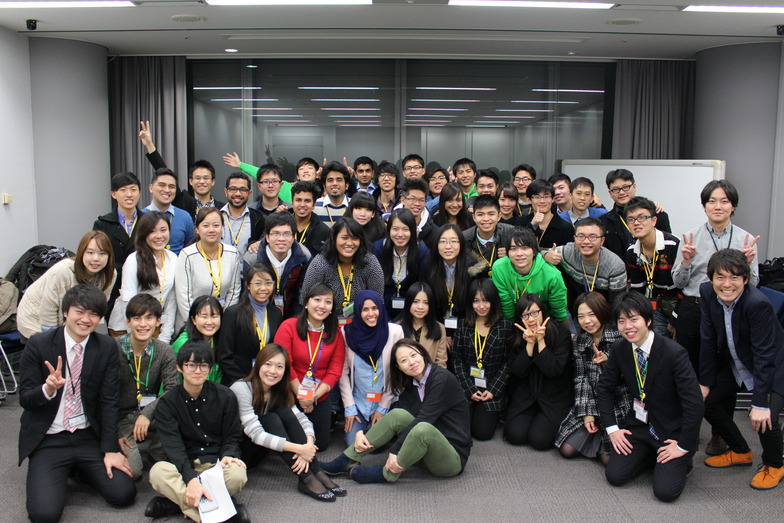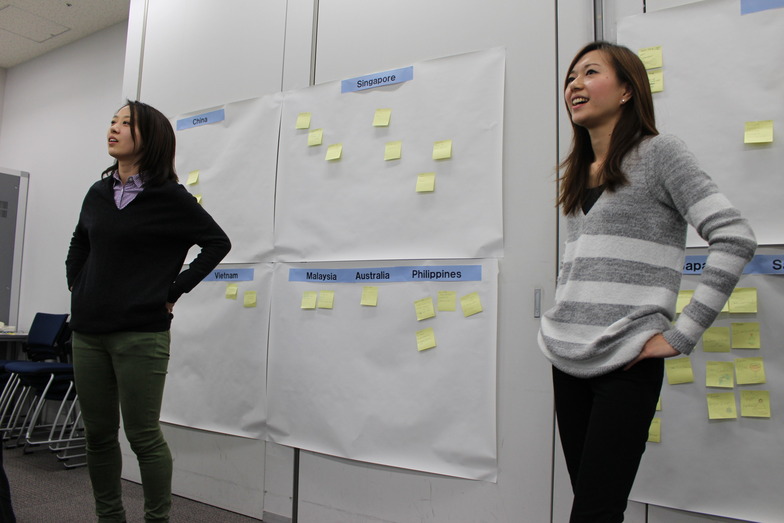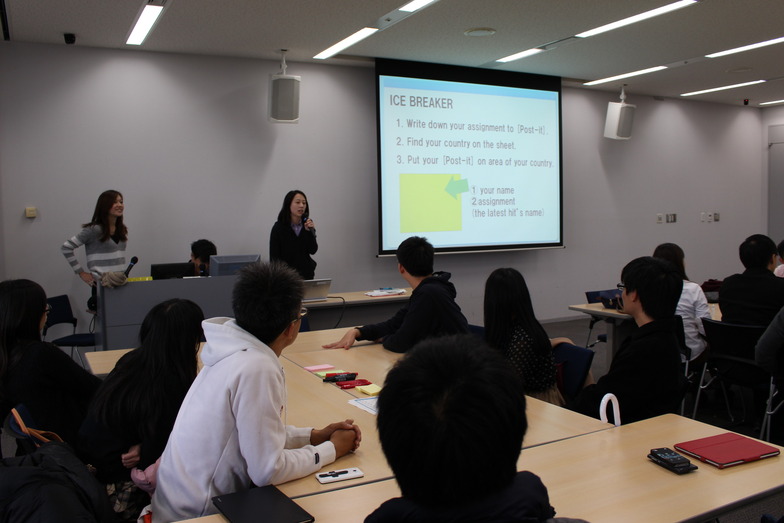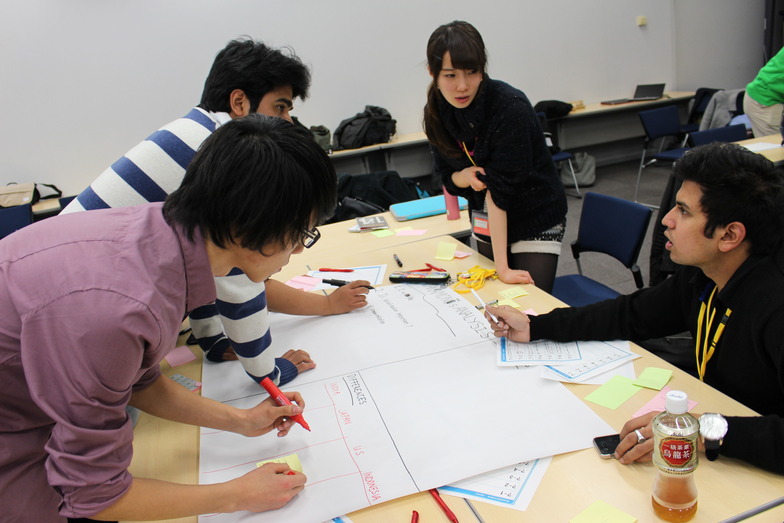Dentsu Inc. Youth Research Department (commonly known as Dentsu Inc. Wakamon) typically conducts research on "Japanese" youth. However, in December 2014, as the year drew to a close, we had the opportunity to hold a workshop with about 40 international students gathered from roughly 10 countries and regions. Together, we explored the commonalities and differences between Japanese youth trends and those in their own countries.
This wonderful opportunity came about through our encounter with "Bizjapan," a student organization founded by university students aiming to "contribute to revitalizing Japanese society from a student perspective, focusing on the themes of 'Entrepreneurship' and 'Global.'"
As of May 2013, the number of students studying in Japan reached 135,519, a 1.6% decrease compared to the previous year. Looking at the top five countries/regions by origin, they are China, South Korea, Vietnam, Taiwan, and Nepal (Source: Japan Student Services Organization survey). For reference, the number of Japanese students studying abroad reached 57,501 in 2011 and has been declining since peaking in 2004 (Source: Ministry of Education, Culture, Sports, Science and Technology survey).
While it's often said that Japanese students' interest in studying abroad has declined in recent years, the workshop with the students I met this time provided a valuable opportunity to understand the commonalities and differences between Japanese and international students.
Japanese students from "Bizjapan" participated alongside international students in the workshop. It was very impressive to see how the international students reacted with surprise and questions when hearing the image of Japanese students conveyed by Wakamon, while the Japanese students responded with empathy, exclaiming, "That's just like us!" The workshop itself was conducted entirely in English, and I could really feel the high level of awareness among the Japanese students.
Now, I'd like to share three key points we learned through this workshop.
1. Approximately 80% of participating students primarily use "WhatsApp" as their main communication app.
According to a 2013 survey by Japan's Ministry of Internal Affairs and Communications, 80% of Japanese people in their 20s use LINE. However, when we asked the students participating in this workshop, "Which SNS or communication app do you use most for communication?", almost all students except those from China and Japan answered "WhatsApp" (As many of you may know, China has restrictions in place, and the most widely used app there is the uniquely Chinese app "Weibo"). .
※ "WhatsApp"... An instant messenger application for smartphones that enables real-time message exchange.
An interesting response to the question "Why do you use WhatsApp?" was "Because Facebook owns it." While they were certainly aware of LINE, it was impressive to see that they understood the operational background and context of the apps they use, rather than just using them casually.
2. Is posting food photos on SNS universal?
Taking photos of food eaten out, delicious-looking dishes, or home-cooked meals and posting them on social media has become commonplace nowadays. It turns out students overseas do the same thing.
When asked what's trending lately, many students mentioned camera apps like Instagram or specific restaurant names. Digging deeper, it seems they visit trendy eateries, take photos with these camera apps, and then post them on social media.
3. Communication Skills Are Key!
During this workshop, we shared results from Wakamon's original survey. In response to the finding that 95% of Japanese students (700 high school and university students, from the Heisei Student Survey) answered, "Getting along well with people is one of the skills needed to navigate life successfully," overseas students also discussed the "importance of communication skills" during the discussion.
However, while the Japanese results emphasize the importance of "smooth relationships with friends and those around you," many international students' comments seemed to focus more on proactive communication, such as "clearly conveying your own intentions to others." This shows that even under the single term "communication," different nuances exist.
While the workshop offered many other discoveries, the next column will delve deeper into the similarities and differences between international and Japanese students through discussions with students from "Bizjapan," who invited international students to Japan. What do international and Japanese students share? And what kind of stimulation or changes do Japanese students experience when interacting with international students?

【Wakamon Profile】
Dentsu Inc. Youth Research Department (commonly known as Wakamon) is a planning team that engages with the real lives and mindsets of young people, primarily high school and university students. We seek insights from their "present" to find hints for brightening and revitalizing the near future. By anticipating the future through their perspectives, we realize new businesses that foster better relationships between young people and society. Currently, 14 project members are based across our Tokyo headquarters, Kansai branch, and Chubu branch. We also share updates on the Wakamon Facebook page.









